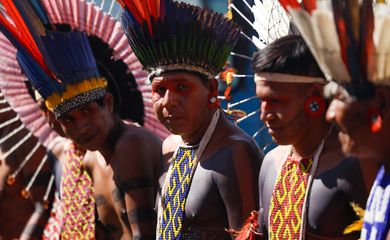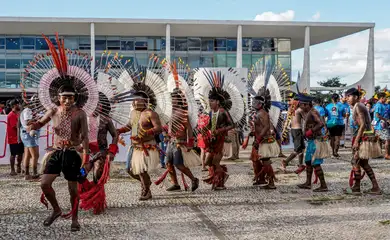Nearly 70% of residents on indigenous lands are under 30

The Brazilian census for 2022 shows that 56.1 percent of the country’s indigenous people are under 30 years old. Considering those living on indigenous lands only, this percentage rises to 68.9 percent.

The data were released by statistics bureau IBGE on Friday (May 3) and indicate a much younger profile than the one registered for all Brazilians.
Also reported were 1,694,836 indigenous people living within national borders, which add up to 0.83 percent of all residents in the country. Of these, 36.73 percent live in indigenous territories.
These groups are distributed across 4,833 municipalities nationwide. Two Brazilian regions, however, show a higher concentration of indigenous people: the North, with 44 percent, and the Northeast Region, with 31 percent.
The survey considered all the territories fully recognized as indigenous on July 2022—a total of 573.
Age
Among the key figures that cast light on the younger profile of Brazil’s indigenous population is the median age. For the general population, the census had a median age of 35. Among indigenous Brazilians, the median age stood at 25. When considering only those living on certified lands, this indicator drops to 19—an even younger population profile.
Among the factors that could contribute to this scenario, IBGE researchers stated, is community life, which allows greater support in caring for children.
Despite the younger profile, when comparison is made with the 2010 Census, a reduction in the base of the population pyramid can be seen over the last decade. Researchers believe this suggests a slight reduction in fertility in these groups.
IBGE Researcher Fernando Damasco also stressed specific drivers surrounding the territorial dynamics of different groups and regions.
“Indigenous lands in the Northeast have much higher ageing rates than indigenous lands in the Amazon. This indicates very specific dynamics for the indigenous people of the Northeast. There is greater proximity to urban centers, more intense outflows and movement for different purposes of daily life,” he argued.




